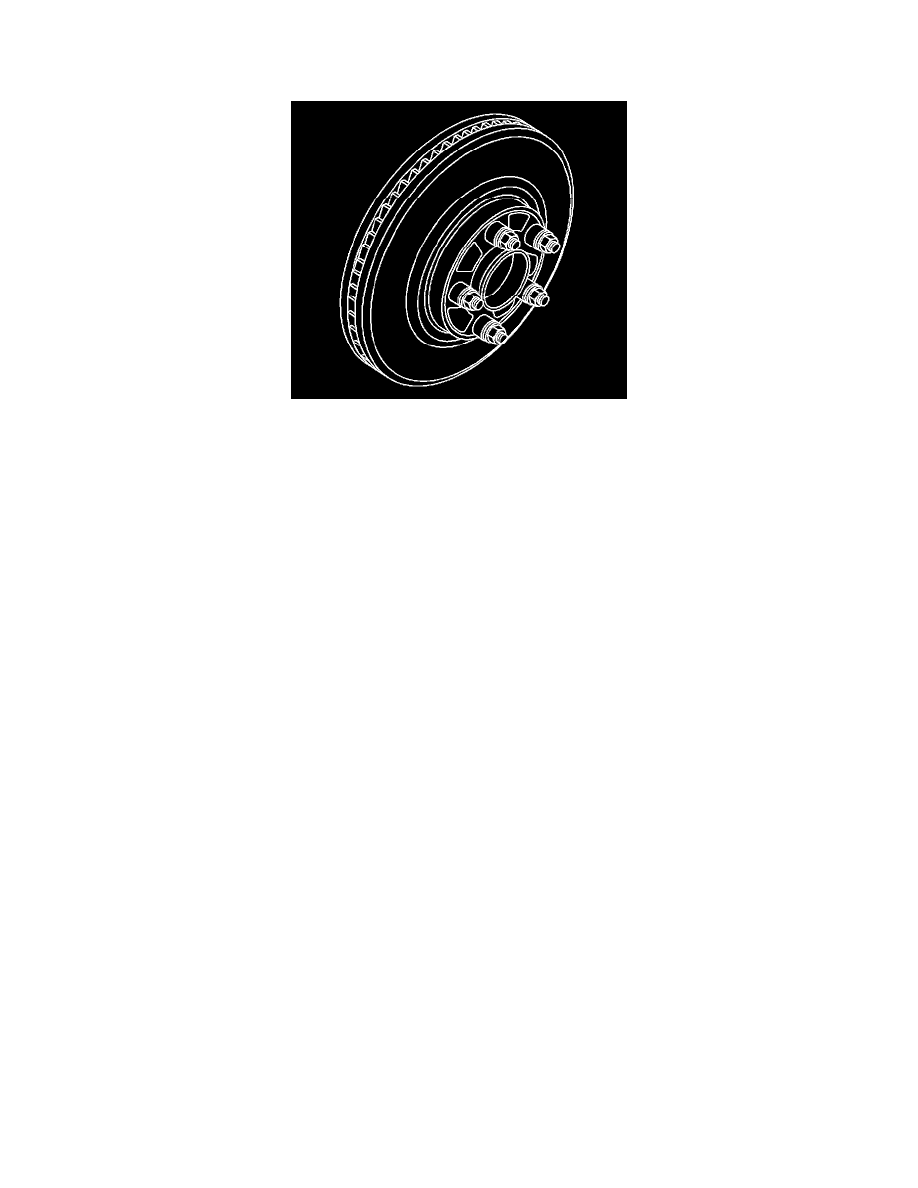Silverado Classic 1500 4WD V8-5.3L Hybrid (2007)

4. Hold the rotor firmly in place against the hub/axle flange and install one of the J 45101-100 (1) and one lug nut (2) onto the upper-most wheel
stud.
5. Continue to hold the rotor secure and tighten the lug nut firmly by hand.
6. Install the remaining J 45101-100 and lug nuts onto the wheel studs and tighten the nuts firmly by hand in a star-pattern.
7. Using the J 39544-KIT, or equivalent, tighten the lug nuts in a star-pattern to specification, in order to properly secure the rotor. Refer to Tire and
Wheel Removal and Installation.
8. Measure the assembled LRO of the brake rotor.
9. Compare the amount of change between this measurement and the original measurement.
10. If this measurement is within specifications, proceed to step 14.
11. If this measurement still exceeds specifications, repeat steps 1-9 until the best assembled LRO measurement is obtained.
12. Matchmark the final location of the rotor to the wheel studs if the orientation is different than it was originally.
13. If the brake rotor assembled LRO measurement still exceeds the maximum allowable specification, refer to Brake Rotor Assembled Lateral
Runout Correction. See: Brake Rotor Assembled Lateral Runout Correction
14. If the brake rotor assembled LRO is within specification, install the brake caliper and depress the brake pedal several times to secure the rotor in
place before removing the J 45101-100 and the lug nuts.
Brake Rotor Assembled Lateral Runout Correction - On Vehicle Lathe
Brake Rotor Assembled Lateral Runout Correction - On Vehicle Lathe
Tools Required
^
J 45101-100 Conical Brake Rotor Washers
Caution: Refer to Brake Dust Caution.
Important:
^
Brake rotor thickness variation MUST be checked BEFORE checking for assembled lateral runout (LRO). Thickness variation exceeding the
maximum acceptable level can cause brake pulsation. Refer to Brake Rotor Thickness Variation Measurement. See: Brake Rotor Thickness
Variation Measurement
^
Brake rotor assembled LRO exceeding the maximum allowable specification can cause thickness variation to develop in the brake rotor over time,
usually between 4,800 - 11,300 km (3,000 - 7,000 mi). Refer to Brake Rotor Assembled Lateral Runout Measurement. See: Brake Rotor
Assembled Lateral Runout Measurement
1. Ensure that the caliper and caliper bracket that are already being supported, are clear from contacting any rotating components, such as the brake
rotor.
2. Remove the J 45101-100 and the lug nuts that were installed during the assembled LRO measurement procedure and/or the indexing correction
procedure.
3. Inspect the mounting surface of the hub/axle flange and the brake rotor to ensure that there are no foreign particles or debris remaining.
4. Set up the lathe, following the manufacturer's instructions.
5. Refinish the brake rotor, following the brake lathe manufacturer's instructions.
6. After each successive cut, inspect the brake rotor thickness. Refer to Brake Rotor Thickness Measurement. See: Brake Rotor Thickness
Measurement
7. If at any time the brake rotor exceeds the minimum allowable thickness after refinish specification, the brake rotor must be replaced. After
replacing the rotor, proceed to step 10.
8. After refinishing the brake rotor, use the following procedure in order to obtain the desired non-directional finish:
1. Follow the brake lathe manufacturer's recommended speed setting for applying a non-directional finish.
